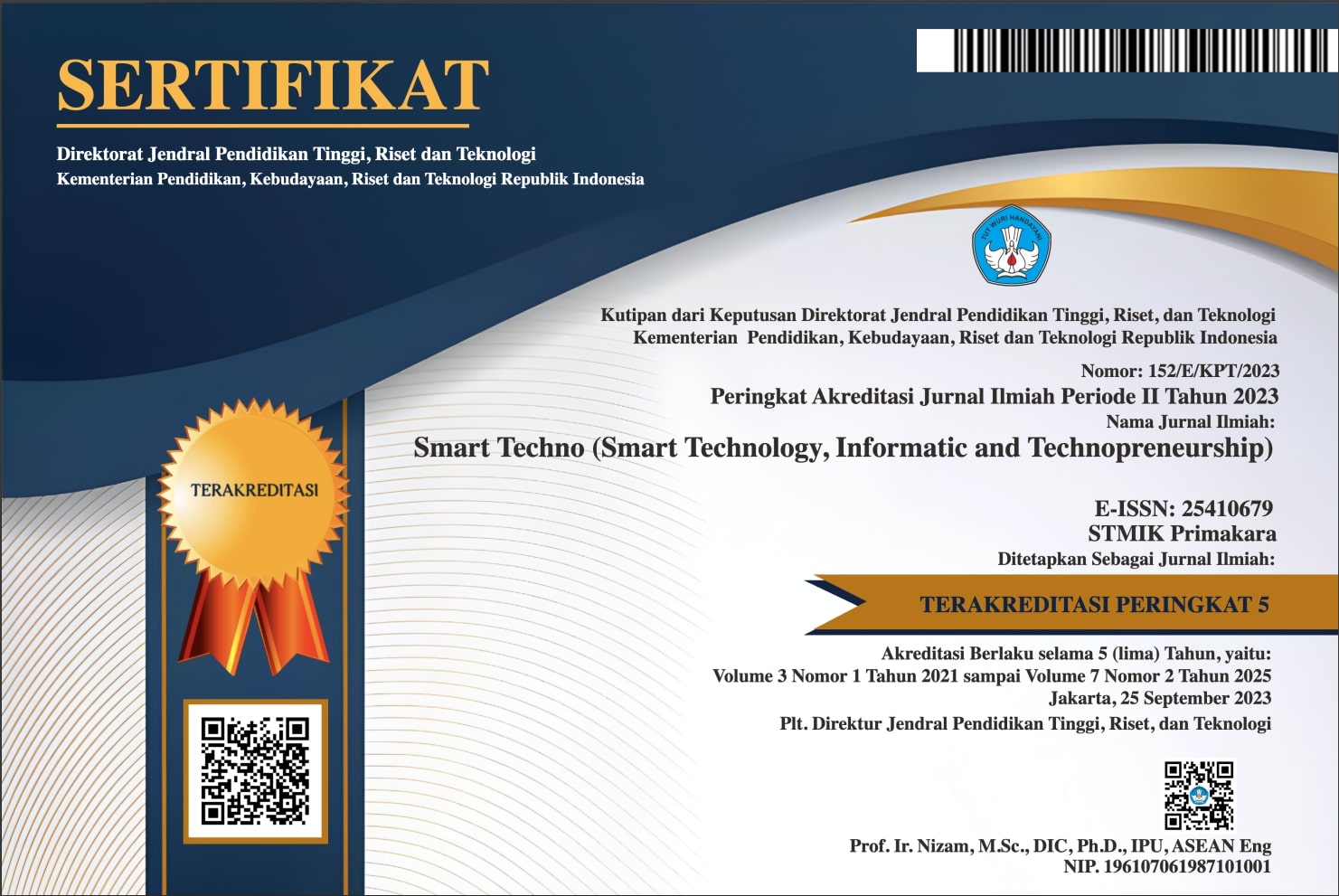Aplikasi Safety Driving Assistance Dengan Perhitungan Haversine
Universitas Pakuan Bogor
Abstract
This research proposes a solution to improve driving safety in Bogor City through the development of an Android-based driving companion application. This application provides a sound warning to drivers when approaching accident-prone locations within a radius of 900 meters. In addition, this application utilizes Location Based Service technology to provide information about the nearest accident-prone locations. The method applied uses the Haversine formula to calculate the distance between the user's location and accident-prone points. The Haversine formula, commonly used to measure the distance between latitude and longitude coordinates, is expected to provide high accuracy calculations. This application aims to provide early warning to drivers, increase awareness, and provide effective information regarding vulnerable locations. With this application, it is hoped that it can reduce the level of traffic accidents in Bogor City. Drivers will be more alert and informed about vulnerable locations, providing early warning when approaching dangerous areas. This solution is expected to contribute positively to driving safety and traffic safety in the region.
Downloads
References
2. A Nugroho., R Jumardi, 2020. Penerapan metode Haversine Formula untuk Penetuan Titik Kumpul pada Aplikasi Tanggap Bencana.
3. Canggih ajika Pamungkas, 2019. Aplikasi Penghitung Jarak Koordinat Berdasarkan Latitude Dan Longtitude Dengan Metode Euclidean Distance dan Metode Haversine ( Vol. 5 No. 2 ).
4. Chandra Husada., Kristoko Dwi Hartomo., Hanna Prillysca Chernovita, 2020. Implementasi Haversine Formula untuk Pembuatan SIG Jarak Terdekat ke RS Rujukan COVID-19.
5. Dimas Dwi Prihantoro., Mohammad Iwan Wahyuddin, 202. Implementasi Algoritma Haversine Formula dan Location Based Service Pada Aplikasi Pencarian Lokasi Bird Contest Berbasis Android.
6. E Maria., E., Budiman., Haviluddin., M Taruk, 2019. Measure distance locating nearest public facilities using Haversine and Euclidean Methods.
7. Istiqommah Sumadikarja., Anggoro Agung Nugroho, 2017. Perancangan Aplikasi Pencarian Rumah sakit BPJS Terdekat menggunakan metode Haversine Formula Berbasis Android ( Vol. 2 No. 2, Pp 33-43 ).
8. Jianqiang Wang., Jian Wu., Xunjia Zheng., Daiheng Ni., & KeQiang Li, 2016. Driving safety field theory modeling and its application in pre-collision warning system ( Vol. 72 No. 2 Page. 306-324 ).
9. Kurnia Saputra., Nazaruddin., Dalila Husna Yunardi., Renny Andriyani, 2019. Implementation of Haversine Formula on Location Based Mobile Application in Syiah Kuala University.
10. Muhamad Itaqilah, 2020. Pengembangan internet of things untuk aplikasi keamanan berkendara pada kendaraan roda dua.
11. Muhammad., Satria Adi, 2021. Rancang Bangun Pengukur Tekanan Ban Sepeda Motor secara Wireless untuk keamanan Berkendara.
12. Muhammad Reynaldl., Syihan Al Khairi., Naufal Geraldi Hendrawan., & Fityandhiya Islam Nugroho, 2020. Sistem Informasi Berbasis Bot Telegram Sebagai Media Sosialisasi Keselamatan Berkendara ( Vol. 1 No. 1 ).
13. M. Faizal Mustaqim., Anan Nugroho., Alfa Faridh Suni, 2021. Sistem Deteksi Kecepatan Kendaraan Menggunakan Metode Haar Cascade untuk Keamanan Berkendara.
14. P Dauni., M D Firdaus., R Asfariani., M I N Saputra., A A HIdayat., W B Zulfikar, 2019. Implementation of Haversine formula for school location tracking
15. Rahmi Hidayati, Nurul Mutiah, 2023. Penerapan Metode Haversine Pada Pencarian Lokasi Fasilitas Terdekat.
16. Salim Sulaeman, 2018. Rancang bangun sistem keamanan dan pembatas kecepatan kendaraan berbasis android.
17. Sarif Irfandi Purnamma, 2019. Aplikasi Pencarian Pariwisata Dan Tempat Oleh-Oleh Terdekat Menggunakan Metode Haversine Berbasis Android.
Copyright (c) 2024 Perdi Yansyah perdi; Mohamad Iqbal Suriansyah Iqbal, Arie Qur’ania Arie

This work is licensed under a Creative Commons Attribution 4.0 International License.
Authors who publish with the Smart Techno agree to the following terms:
- Authors retain copyright and grant the journal the right of first publication with the work simultaneously licensed under a Creative Commons Attribution License (CC BY-SA 4.0) that allows others to share the work with an acknowledgment of the work's authorship and initial publication in this journal.
- Authors are able to enter into separate, additional contractual arrangements for the non-exclusive distribution of the journal's published version of the work (e.g., post it to an institutional repository or publish it in a book), with an acknowledgment of its initial publication in this journal.
- Authors are permitted and encouraged to post their work online (e.g., in institutional repositories or on their website) prior to and during the submission process, as it can lead to productive exchanges, as well as earlier and greater citation of published work. (See The Effect of Open Access)







